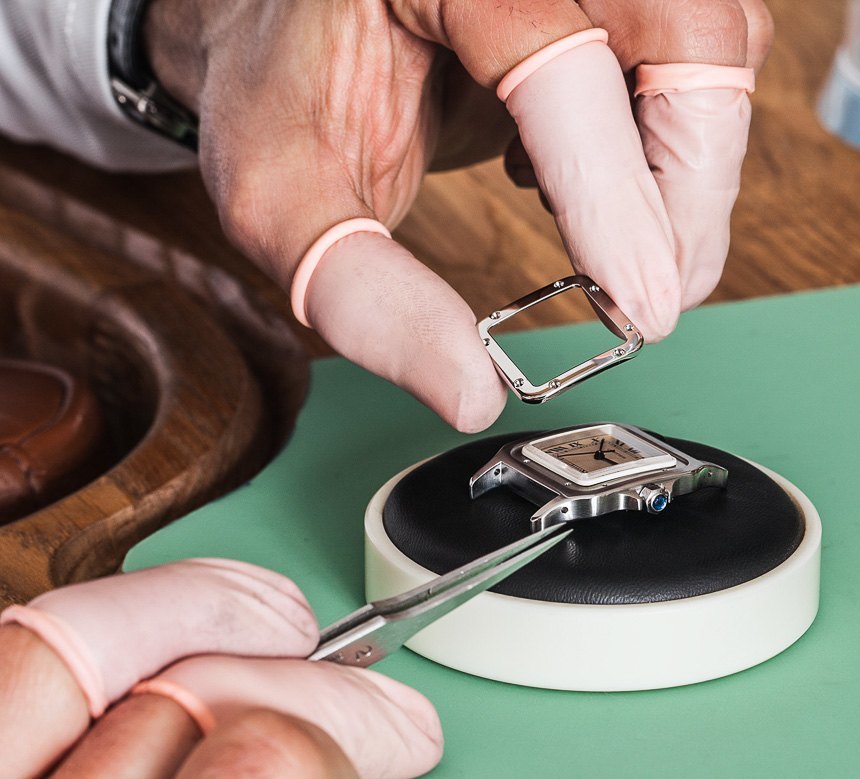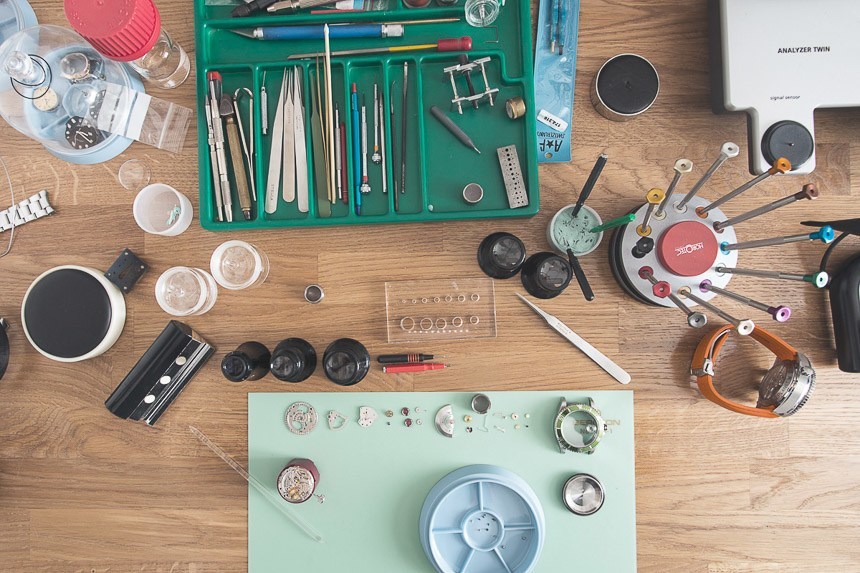
As an aBlogtoWatch guest, Hugh Taylor from Xupes.com (a pre-owned watches and luxury goods dealer in the UK) once again interviews their in-house master watchmaker, Mickey Nolan, as they talk about the often mysterious and typically expensive world of watch service and repair. Oftentimes, the only “true” account of watch repair comes from the men and women who are actually fixing the watches. We attempt to clear up myths, explain the source of delays and costs, and offer a watchmaker’s perspective of the watch service and repair process.
A few weeks back, I read over the story that Rolex was bumping up its guarantees and service intervals. All new watches were to have five-year guarantees, and the recommended service interval had miraculously jumped from three years to a whopping ten. This must have come as a thunderbolt to their rivals, I thought, but how come such a hefty confidence boost? As far as I knew, Rolex hadn’t made any drastic technical changes on the level of such a considerable policy alteration.
Rolex was potentially stirring up an industry movement, and for once, it would be one that would save clientele a lot of money. But instead of being contented with this, I started wondering about the watch servicing industry and whether or not we really need to send our watches in as often as they say.

So I fixed another meet with Mickey the watchmaker at pre-owned luxury watch retailer Xupes, and went in to try to dig out his point of view. By now, I had a few other questions saved up, mainly about the costs and occasionally baffling wait times, i.e., do we need to send our watches into the brand, or will a third party do the job just fine? What makes up the cost? How do we make sure to find a competent watchmaker that doesn’t throw in extra charges because he’s fully aware we have no idea what he’s doing?
It was over 25 degrees that day in Hertfordshire, England, which is, regrettably, what we call a “heat wave.” Mickey was servicing a Cartier Tank and a Rolex Submariner. The reggae in the air said he was in a feel-good frame of mind, perhaps why he let me into the business end of his trade.
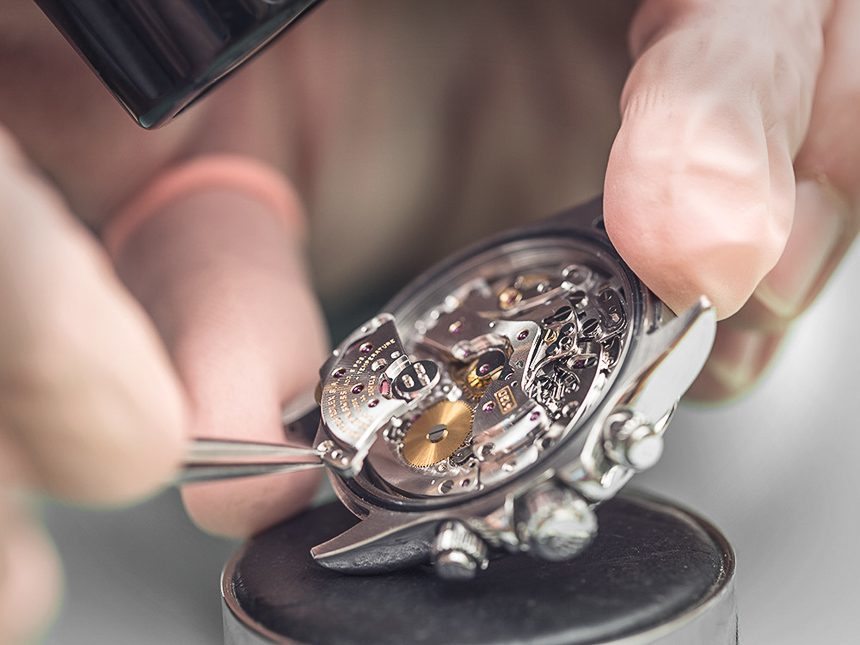
Hugh Taylor: Hey, Mickey. So, you already know where I want to start. Basically, given the Rolex announcement, I wanted to find out if we need to service our watches as often as they say?
Mickey Nolan: Well, I know where you’re coming from, but there’s a lot to take into account. Your simple answer is, if a watch is new or it’s been serviced well previously, and it’s been looked after and kept away from electrical appliances, then it can go a lot longer than the suggested time. I’ve known Rolexes that have never been serviced and still run like they did out of the box.
I look at it like going to the dentist. People say once there’s a problem then the damage is already done, and it could’ve been curbed by regular trips. Others say if it isn’t broken, don’t fix it. I guess it depends what type of person you are. Taking it apart, re-oiling it, and cleaning it where necessary will prevent parts wearing. Worn parts can damage others, but it all costs money, and you’re probably only going to need to replace a part or two, I suppose you could ask yourself whether or not the cost of that part outweighs the cost of regular services.
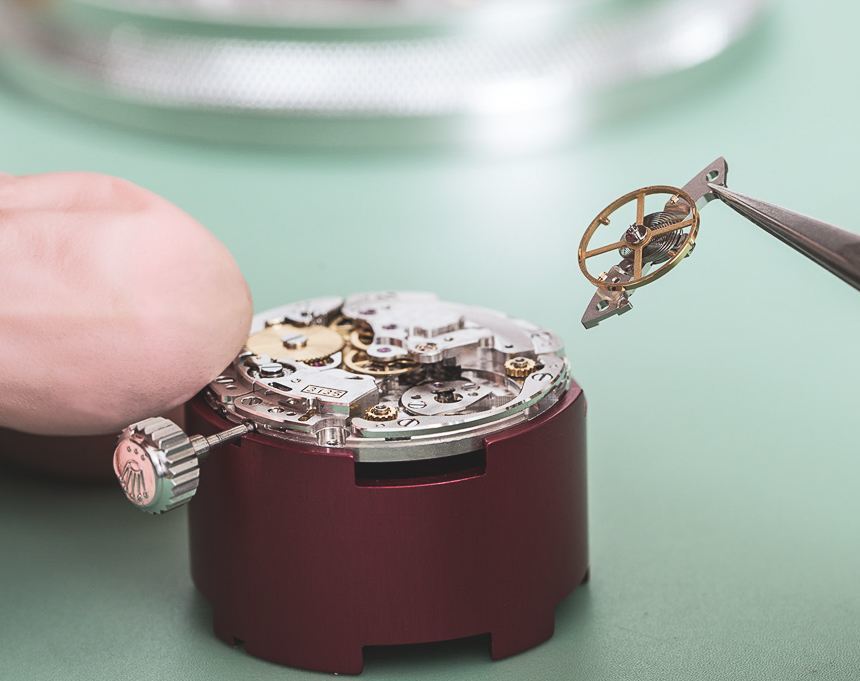 (Mickey swaps to brass tweezers so as not to scratch the steel. He tells me that despite being stainless, these parts mark very easily.)
(Mickey swaps to brass tweezers so as not to scratch the steel. He tells me that despite being stainless, these parts mark very easily.)
Hugh Taylor: Warranties: are they useful or worth it? Are they actually helping to save people money or are watch repairs something that typically exist outside of warranties?
Mickey Nolan: A service warranty should always increase the value of the watch or at least make it more desirable if you want to sell it. Damage or accidental damage can happen at any time, inside or outside of warranty.
Accidental damage generally isn’t covered by warranty. For example, if a watch is dropped from a height onto a hard surface, and impact marks are clearly visible, then this is usually chargeable.
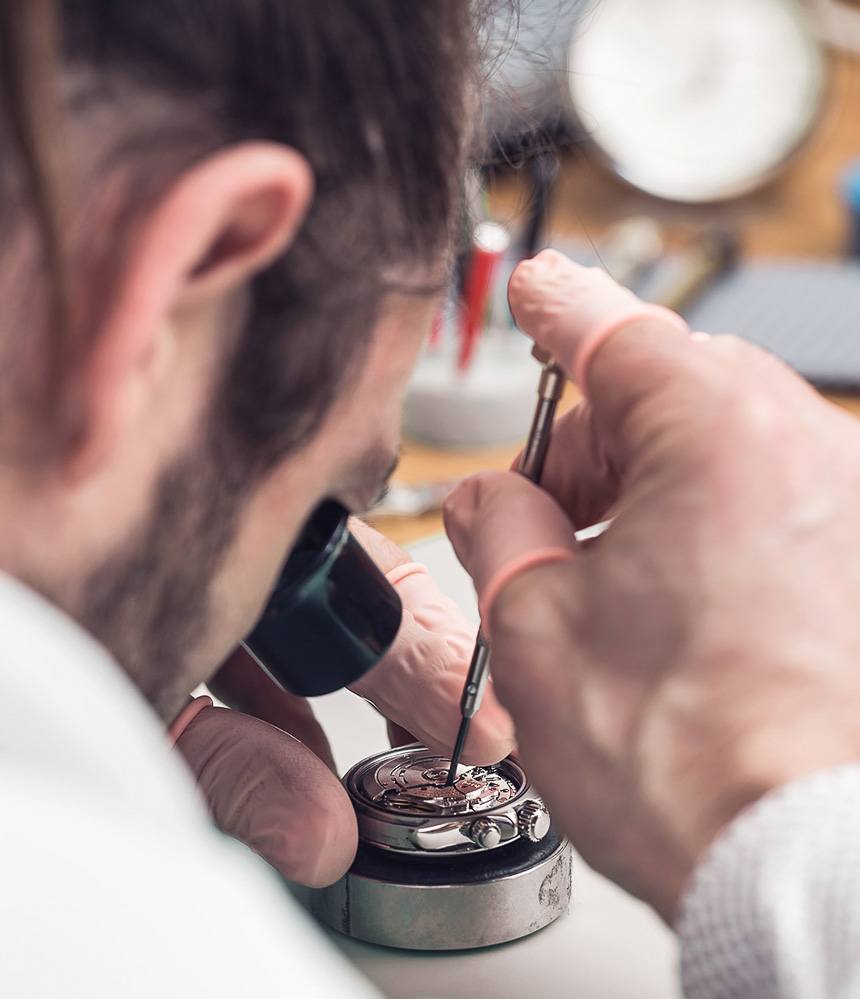
Hugh Taylor: What should we expect from a standard watch service?
Mickey Nolan: Other than the usual clean, polish, and re-oil, you will always have wear in a watch where metal is acting on metal. Always expect that some parts will need to be changed. This means damage to the case, bracelet, or crown too. This nearly always means an extra charge.
Wherever you end up going, a service is always going to cost, because you have to pay for an expert to dismantle the whole thing and lubricate the parts.
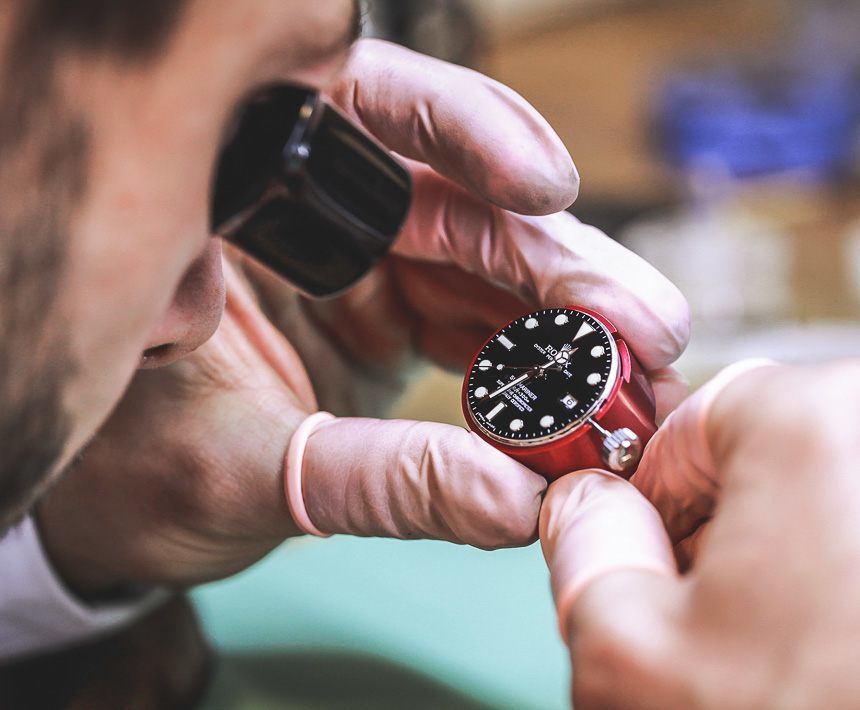
Hugh Taylor: You’ve worked for different brands and you’ve worked independently, what would you say are the pros and cons of sending a watch into the brand?
Mickey Nolan: There are many. For a start, you’re always sure to get original parts and longer guarantees, but their services can be a lot more expensive. Many brands replace parts automatically, regardless of whether or not they need replacing, because it’s their protocol. So they might give a full service to the watch because there’s been damage to the case, when perhaps it’s not always necessary.
Finally, because of the amount of work they get and the amount of bureaucracy they have to go through, wait times are often a lot longer at the manufacturer. So you can see why third party servicing is getting more popular.
Hugh Taylor: How do you find a decent third party watchmaker?
Mickey Nolan: Nowadays, a lot of watchmakers are set up online and should have a stack of reviews. Reading those should give you an idea, but you also want to make sure the company gives its own warranties and services its watches or has them serviced.
Then, you need to think about the quality of the watch and how complicated the movement is to repair. I wouldn’t want to send a Richard Mille or a tourbillon movement into a watchmaker who’s only worked on entry-level watches.
Ask what experience the watchmaker has: have they been trained by any of the brands? Have they been certified by any of the brands? Each brand has its own specific exams. Only once you’ve passed the exam, which are sometimes very tricky, can you get access to instruction manuals and parts. You’ll also need to buy specific equipment to be able to service that brand.
Hugh Taylor: Is accreditation from the brand essential?
Mickey Nolan: It’s going to be difficult to find a watchmaker who’s been accredited by everyone. There are so many different brands and so many different movements that watchmakers are learning until the day they retire. But there are plenty of watchmakers out there that have the tools and experience to do the job; you just have to check them out first.
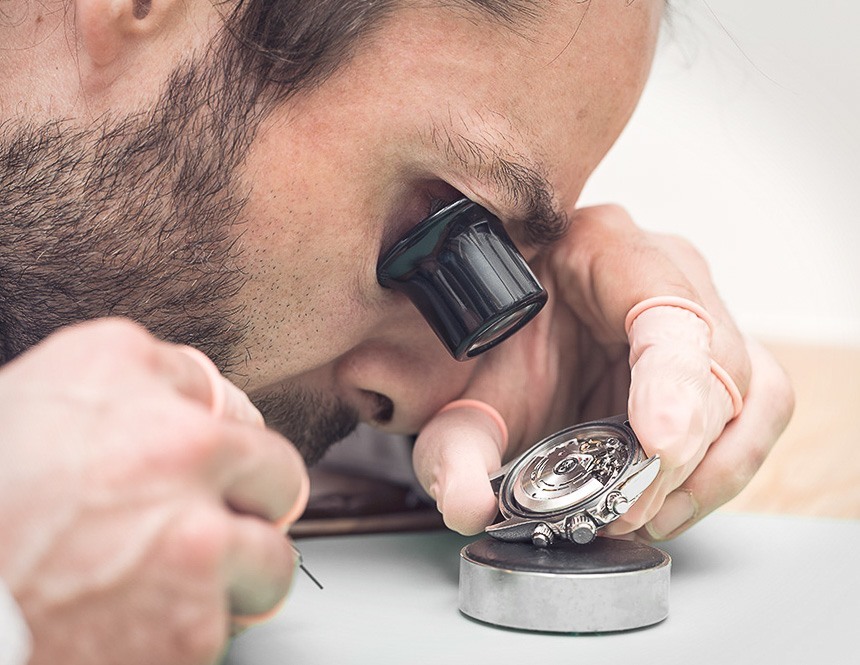
Hugh Taylor: How can you trust them to only do the necessary amount of repair?
Mickey Nolan: Well, it’s difficult for a customer who doesn’t know much about watches to understand what’s necessary. You won’t know what’s been replaced unless you ask for the old parts back and request timing machine readings. Maybe you should just get a couple of quotes from different places and take your pick.
After the service, you can check the watch against a digital clock to make sure it’s accurate. Ask for a breakdown of the service too. What work was needed to achieve the desired standard of the warranty?
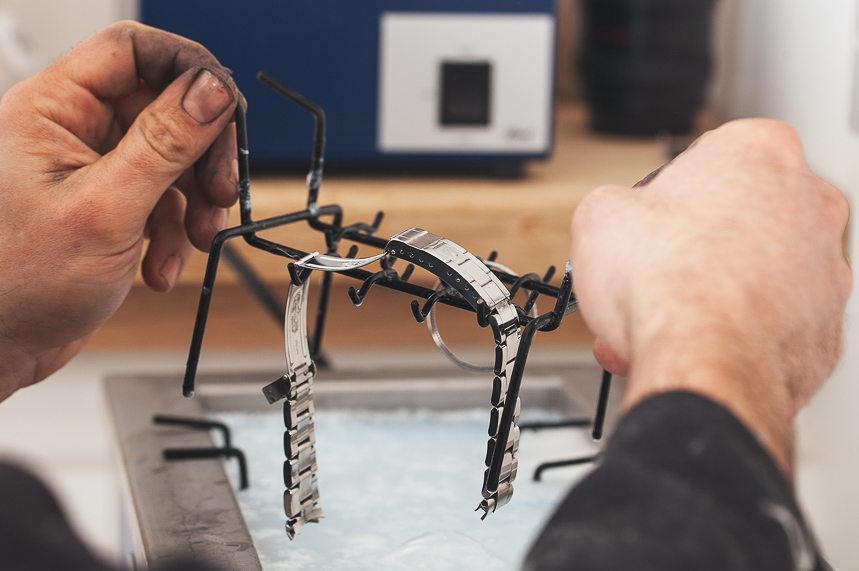
Hugh Taylor: OK, so someone who has, say, a few years experience working different watches and has accreditation from a couple of brands could be good enough to do a service. But how can they do the job if they don’t have access to the manuals, specific equipment and official parts?
Mickey Nolan: Well it doesn’t stop everybody, it just holds them back. What I mean is you can get parts by asking around other watchmakers, and there’s a big market for generic parts. The information is out there too, as is the equipment.
Hugh Taylor: By “generic” do you mean fake?
Mickey Nolan: They’re not fake, no. They are exactly the same as the official parts but they don’t come from the brand. Most of the time, they’re just as good, and they’re a lot cheaper.
Hugh Taylor: Do you notice the difference between a Rolex part and a generic one?
Mickey Nolan: It’s not always easy. Some of the parts are identical.

Hugh Taylor: So do you ever just use those then?
Mickey Nolan: Not personally. Our company policy is to use official parts. Yeah it probably wouldn’t harm the watch, but we take the line that if the client has paid for a Rolex then they deserve Rolex parts. If they ever sent it off to Rolex instead, then Rolex would definitely say something.
Hugh Taylor: When can a watch service turn into a costly nightmare and how can we avoid it?
Mickey Nolan: There can be many reasons why a service repair can turn expensive. Some parts are pricey, like dials, for example. Also, if the watch is old, and parts are hard to get, or the movement is obsolete, even, then this can be extremely expensive, sometimes to the point of not even being worth it. I worked on a lovely 18-karat gold Pasha de Cartier a few months ago, but the movement was a mess, it’d been all over the place. The movement was obsolete too, so the owner needed to go to Switzerland for a new one. They’re probably looking at three grand for that.
Another big one is water damage. That can get very costly if not dealt with soon. If there’s a lot of moisture inside the case, then parts can rust very quickly. So if you do notice water damage, then send it in as fast as possible to minimise the damage, or it will get more expensive day by day.
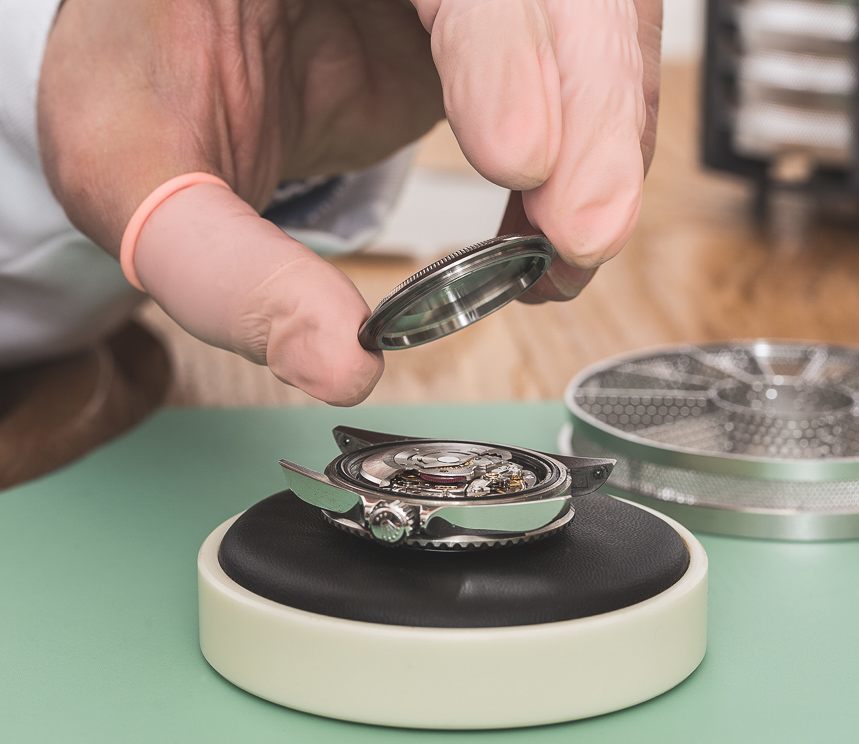
Hugh Taylor: Do you come across many watches that have been butchered by inexperienced watchmakers and filled with generic parts?
Mickey Nolan: All the time. Most of the time, it’s pretty obvious too. You’ll see it in the screws for a start, they’ll be all chewed up. I mean, some of these guys aren’t even sharpening their screwdrivers, you know. You get all sorts of issues with them.
The thing with watchmaking, you see, is that so much can go wrong even for experienced professionals, and fixing it isn’t always easy. If you’re working on a watch with obsolete parts, and something springs out, and you can’t find it, then you have to make a new one. That can be a real challenge.
Hugh Taylor: Does that happen often?
Mickey Nolan: Well, if people are working on a new watch without necessary training, then yes. Some things are spring-loaded, you see. So suddenly you’ve removed a wheel, and something’s pinged across the room. Now you have to search the place for a spring the size of a pinhead. I’ve heard stories about parts turning up in people’s shoes a week later. Imagine losing a little diamond!
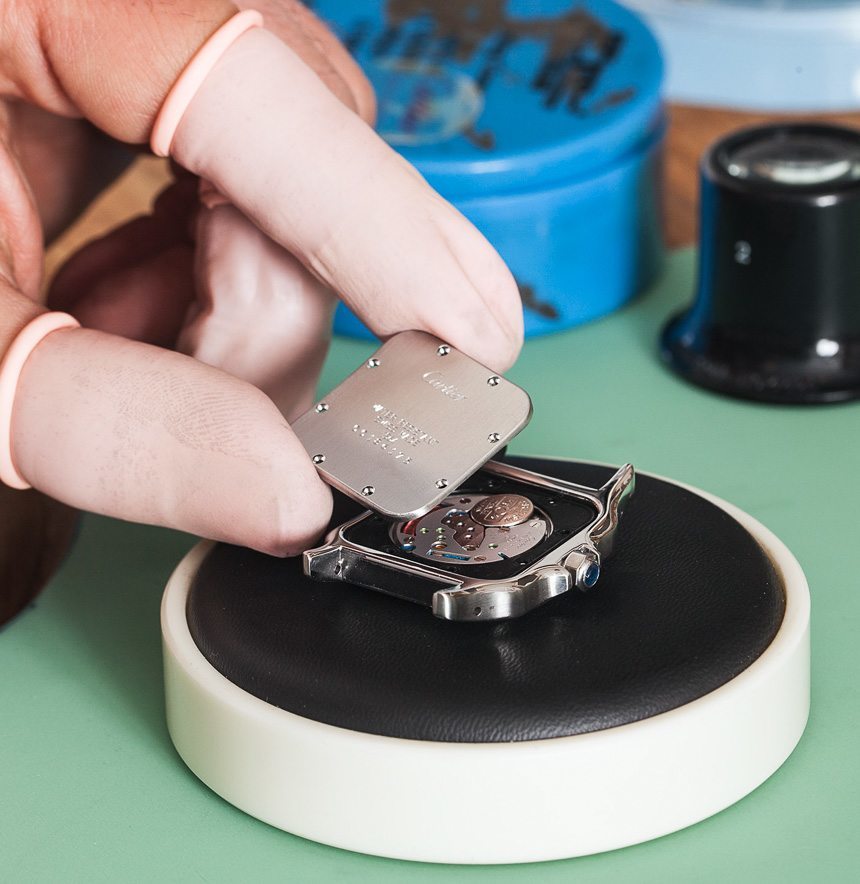
Hugh Taylor: Yeah, it can’t be too difficult to lose one of those.
Mickey Nolan: Yes, that’s the problem. People do it all the time. What’s more, all these screws look very similar, but if they’re putting the wrong one in the wrong hole, it could snap. Sometimes, the screw will fit in somewhere, but it’s not actually the right one for that thread, and then you’ll find out later on because one screw won’t go in somewhere else, and then you have to go back over your steps. There’s one here where the thread is the other way around so it doesn’t unwind.
Hugh Taylor: So there’s plenty that can go wrong then?
Mickey Nolan: I’m telling you about all the things that can go wrong for the inexperienced or unlucky, but generally, for those with the right training, it goes smoothly. And anyway, a company that provides warranties would be responsible if there was ever any issue, and would contact the brand if they needed to.
Hugh Taylor: Finally, watch restoration: how can we get what we want and not what we don’t?
Mickey Nolan: Watch restoration can be a grey area. Generally, it’s a lot more work and can incorporate a lot of hidden costs. All I can say is to check the watchmaker out first. Always ask for an estimate of costs before going ahead with any work. And get a few quotes.

(By now, Mickey has finished stripping down the movements, and all parts are ready to go into the ultrasonic cleaner. From here, he’ll re-oil the wheels and jewels, and check parts for wear and tear.)
We’d been in there for two hours, altogether, and I’d been trying to maintain close attention while Mickey rolled through the motions and chatted away about what I was watching, but by that point, I was more than ready to get out into the tail end of the sunshine. I felt satisfied that I’d learned what I went in for. Well, mostly – although Mickey hadn’t enlightened me on how Rolex managed such a sizable jump, I’d guessed they’re just that confident in the quality of their latest watches. Anyway, more importantly, I had a far better understanding of the watch servicing and repair industry, and I felt confident that many third party watchmakers like Mickey were more than qualified to do the job.
Looking back, I’ll admit my appreciation for the Rolex empire is up since that day too. I mean, given Mickey’s explanation, ten years is a very long time not to go to the dentist.
Written by Hugh Taylor, editor of Xupes Magazine; photography by Owen Davies, Xupes.

